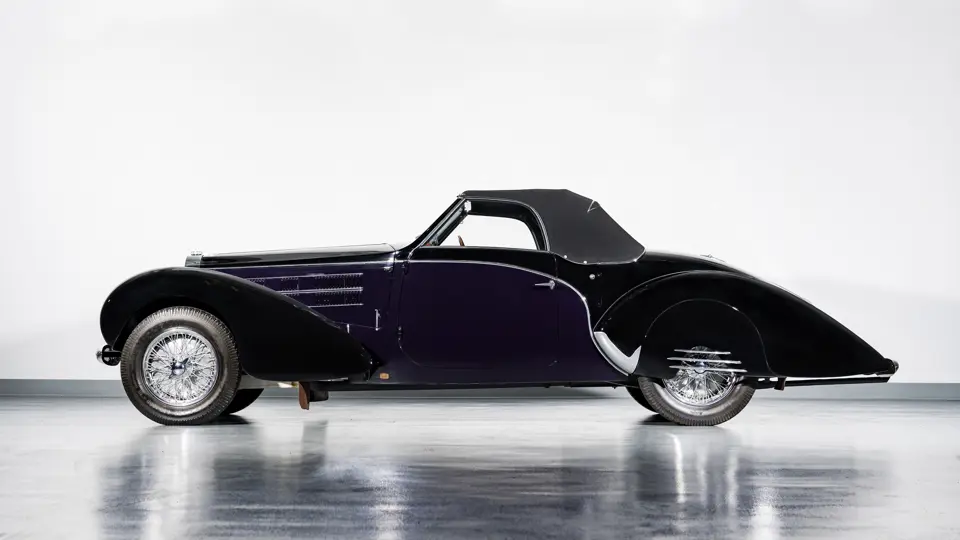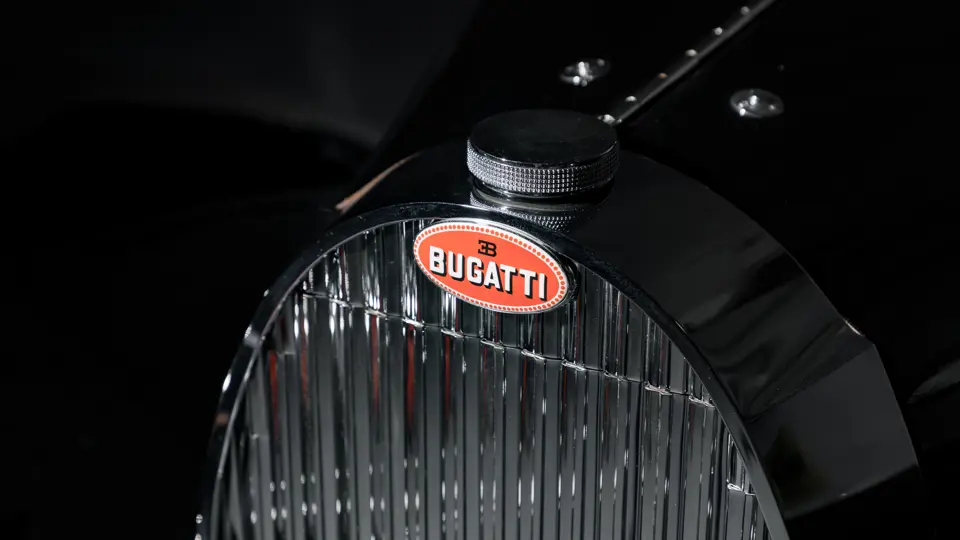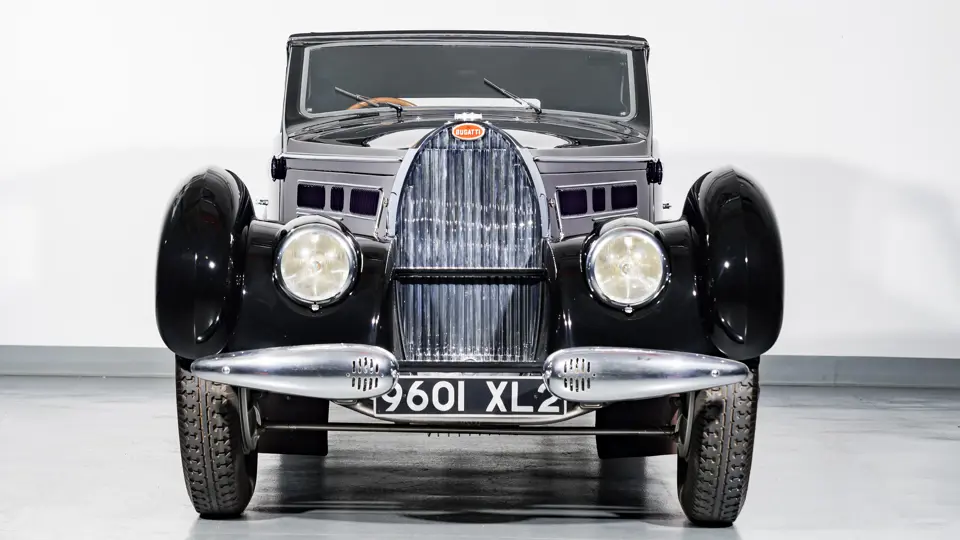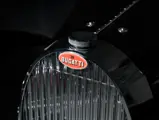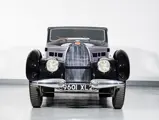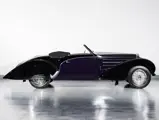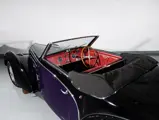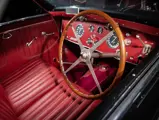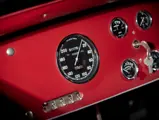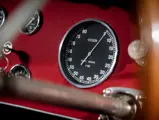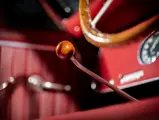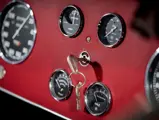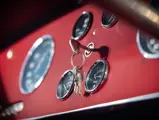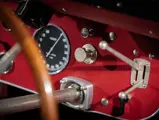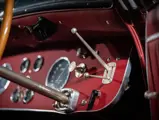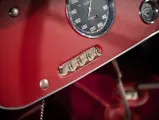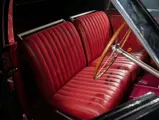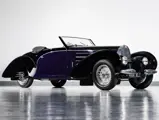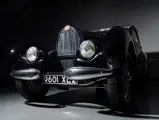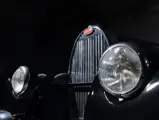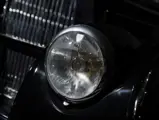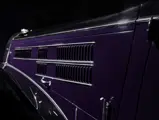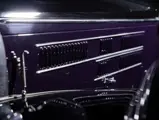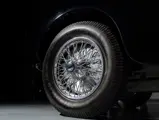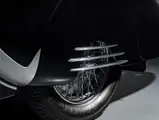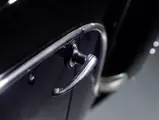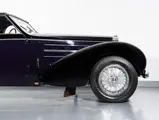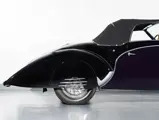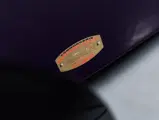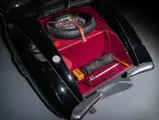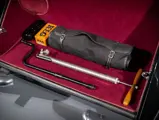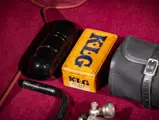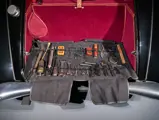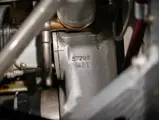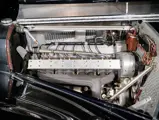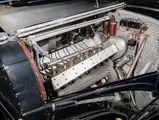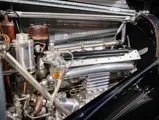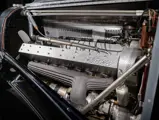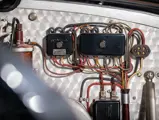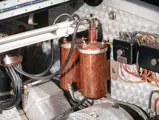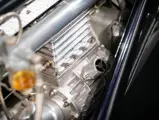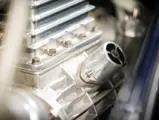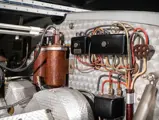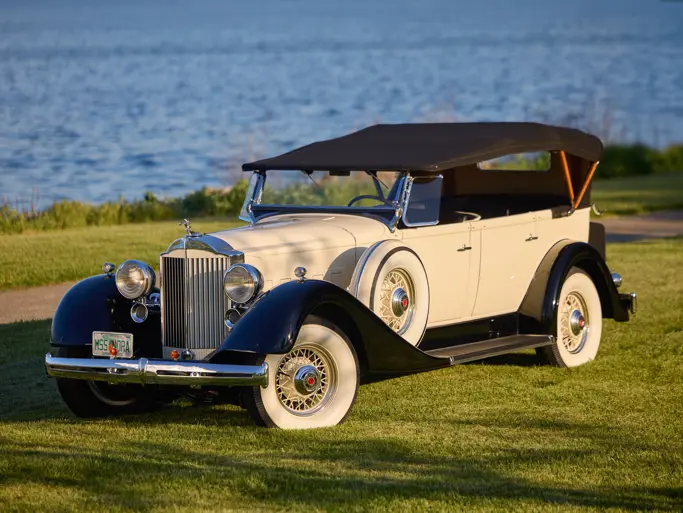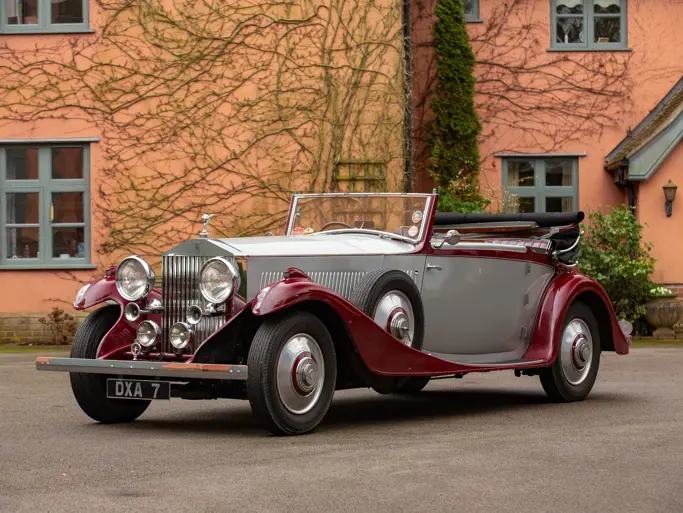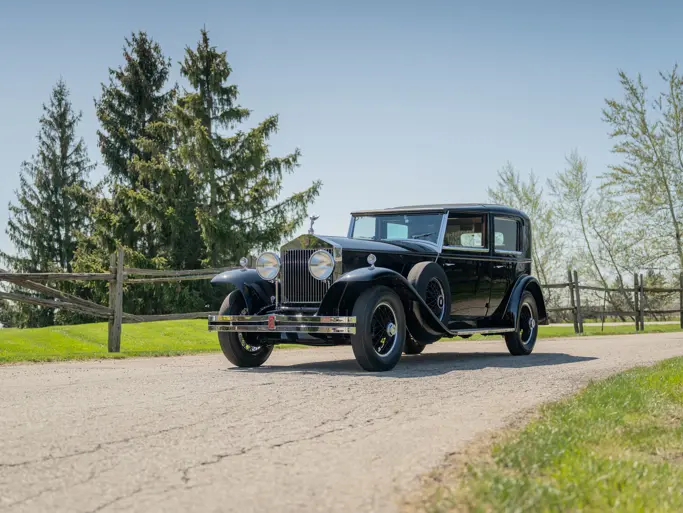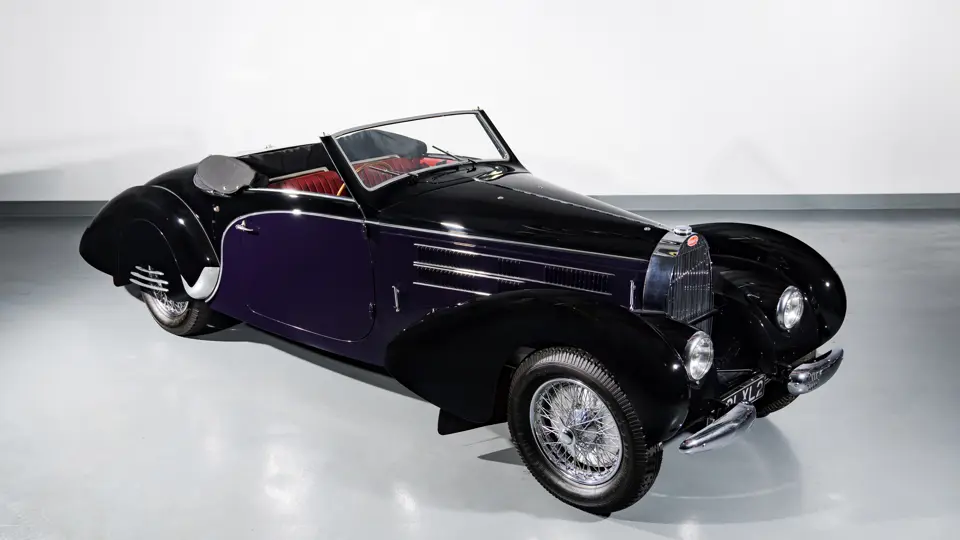
1939 Bugatti Type 57C Aravis Special Cabriolet by Gangloff
{{lr.item.text}}
$1,545,000 USD | Sold
Offered from the Oscar Davis Collection
{{bidding.lot.reserveStatusFormatted}}
- Known history since new and accompanied by report from marque expert Pierre-Yves Laugier; acquired by Oscar Davis in August 1993
- One of three extant Aravis examples bodied by Gangloff; one of two originally supercharged
- Later modified by Graber with fixed metal top; restored back to original style 1995–2001
- Retains its original Gangloff body with correct new spats; new wood throughout
- Fitted with a correct-type engine, no. 431, previously installed in chassis 57619
- Extensively shown and toured, including the Pebble Beach Concours d’Elegance
GANGLOFF AND BUGATTI’S TYPE 57C
The Type 57 is one of the most celebrated of all non-racing Bugatti chassis. Its unbeatable combination of style and performance made it an instant success, and from its introduction it provided Jean Bugatti with a final, lasting legacy for the automotive history books.
Prior to its introduction in 1934, Bugatti had set the lofty goal of creating an automobile that exuded the excitement and racing heritage of the company, while incorporating the refinement and drivability of a road car. The Type 57 was successful in combining some of the temperament of the racing chassis while offering a level of comfort that even the most polished of European elite appreciated.
Some of the most memorable designs on this chassis carry the Bugatti name, as many came from the creative mind of Jean Bugatti and were offered as factory catalog body styles. Although a number of Type 57 convertible bodies in his catalog were dignified and pleasing to the eye, they lacked the flair of his racy closed cars, such as the Atalante or Atlantic. As a result, Bugatti envisioned a more exotic open car that would set a new standard for styling; the coachbuilding firm of Gangloff was entrusted with the task of crafting the new model. The results were nothing less than spectacular.
Chassis 57798 is one of only three extant examples of the Aravis body style by Gangloff, which were built in 1938 and 1939. Like other Bugatti bodies, the Aravis was named after a beautiful mountain range, and it was designated as a 2/3-seater cabriolet when it was first offered in the 1938 catalogue. Only Gangloff and Letourneur et Marchand were allowed to dub their 2/3-seater cabriolets “Aravis,” and it is believed that each coachbuilder produced six of these bodies.
LE ARAVIS DU DR. CHAUVENET
This Type 57C was originally ordered from Bugatti in the fall of 1938 by Dr. André Charles Chauvenet of Thouars, France via the local dealer J.B. Arnaud. Chauvenet, who had owned no less than five previous Bugattis over the years, further specified a dual-overhead-cam engine with supercharger, Rudge wheels, electric starter, Stromberg carburetor, and Aravis Convertible Coupe body by Gangloff; the car’s final retail price was an eye-watering 135,000 Francs.
Correspondence on file between Gangloff and Arnaud show that this particular Aravis “Special Cabriolet” body is derived from a synthesis of Bugatti style drawings 3888 (8 August 1938), and 3942 (25 November 1938) which were subsequently refined with modifications including headlamp guards, a foam-stuffed rear seat, black top with red leatherette piping, chrome side molding, and three sets of vertical hood louvres. Its original color is reported to have been black, or an exceedingly dark shade of blue or purple, over a red leather interior.
According to a report on file from marque expert Pierre-Yves Laugier, Gangloff had completed the body for the car by mid-November 1938, although Bugatti apparently did not send the coachworks the rolling chassis until late December. The union of the two did not occur until the new year, and chassis 57798 was finally delivered to Chauvenet in January 1939. At the time of his purchase, Dr. Chauvenet was a decorated World War I veteran, leading surgeon at the Thouars hospital, and a repeat Bugatti customer; he only enjoyed a few short months with the car before he was called back into service as a medical officer for the French Army.
Less than a year after accepting delivery of this striking Bugatti he would become a leading resistance coordinator against the Nazi-Vichy regime in Western France. By July 1941, his resistance cell had been infiltrated by a Vichy double-agent and all were imprisoned or executed. Chauvenet himself was kept in France, and later, German, prisons until early 1945 when he was then sent to the infamous Buchenwald concentration camp. Miraculously, both Chauvenet and his collection of Bugatti automobiles survived the war; all were reunited in early May 1945.
TO SWITZERLAND
In February 1946, 57798 was sold to Didier Soriano of Bordeaux via the originating dealer J.B. Arnaud. It then passed to the hotelier, restauranteur, and amateur racer Hermann Trümpy of Glarus, Switzerland in October 1947. Interestingly, Trümpy was also one of the financiers for the famous post-war sports car company Veritas GmbH. Period photos on file show that Trümpy raced the car quite spiritedly in several amateur hill climb events throughout Switzerland. By the time he was powering this Bugatti sideways through the Alps, its original body, top, color combination, headlamp guards, rear spats, bumpers, and Rudge wheels were still present.
Circa 1951, Trümpy sold 57798 onward to André Turrettini of Geneva. Much like its first owner, Turrettini was a doctor (in his case, a noted obstetrician and gynecologist) and dedicate Bugatti enthusiast, owning at least three over the years. He would retain this chassis until 1959; photos on file dated 12 October 1951 indicate that he was involved in an incident with the car that damaged the front driver’s side fender, but this speed bump clearly did not put him off ownership of this beautiful machine. Its next custodian was Geneva-based collector Pierre Strinati who, in 1959, commissioned the coachbuilder Graber to mount a solid steel roof to the body—thereby converting this Aravis Cabriolet into a fixed head coupe. At this time, Strinati also had the car sympathetically redone in a two-tone red and black paintjob over maroon leather.
The car remained on display in the Strinati Collection until 1984, when it was subsequently exported from Switzerland. After briefly passing through the impressive stables of the late Bill Serri, Jr. of Cherry Hill, New Jersey and then the late Myron Schuster of Bedford, New York, this remarkable Type 57C was acquired by Oscar Davis in August 1993.
WITH OSCAR DAVIS
Upon acquiring this fine Bugatti, Oscar Davis immediately set about researching its history in preparation for an accurate and complete restoration to its original specifications. Gathering information from disparate sources including marque historians, previous owners, and the car’s extensive history file, he revealed much about its early appearance; by late 1995, the car’s restoration was starting to take shape.
The full restoration of the Bugatti's bodywork was entrusted to Classic Coach Repair of Elizabeth, New Jersey in order to return the car to its original 1939 cabriolet configuration. A full binder of photos documenting the disassembly and body restoration illustrate that, although much of the car’s structure and body was intact and original, its original split bumpers, spats, and other unique details were gone or altogether in need of correction. As a measure of remediation, new wood framing was masterfully installed throughout, and the body modifications by Graber were also carefully reversed to bring back Gangloff’s signature Aravis styling.
Concurrently, the chassis and drivetrain were delivered to Leydon Restorations of Lahaska, Pennsylvania to be restored as a complete running chassis. The car’s correct-type 3.3-liter dual-overhead-cam straight-eight engine was entirely rebuilt and returned to its original supercharged configuration. It should be noted that Bugatti owner registry listings on file indicate this engine was previously installed in a 1937 57C Stelvio (57619). Put simply, absolutely no cosmetic or mechanical component escaped redress during the course of this seven-year restoration.
Davis also had 57798’s exterior returned to a dark shade that more closely resembled its original livery, which was once again paired with a red leather interior—a handsome black soft top was provided, and a set of chrome Borrani wire wheels was installed, perfectly complementing Chauvenet’s specified chrome trim.
Since emerging from this impressive restoration in 2001, 57798 has lived a lavish life of public exhibition at many of the world’s preeminent automotive concours. Showings at the Pebble Beach Concours d’Elegance (and Tour), Louis Vuitton Classic Concours, Greenwich Concours d’Elegance, and other leading events have rightfully elevated the provenance and public appreciation for this remarkable Aravis Special Cabriolet.
This Type 57C offers its next owner membership into a fantastic community of enthusiasts—one that holds events and rallies which celebrate the Molsheim marque worldwide. The other two surviving Bugatti Aravis examples by Gangloff are in the hands of long-term collections, making the offering of this particularly flamboyant car a special opportunity indeed.
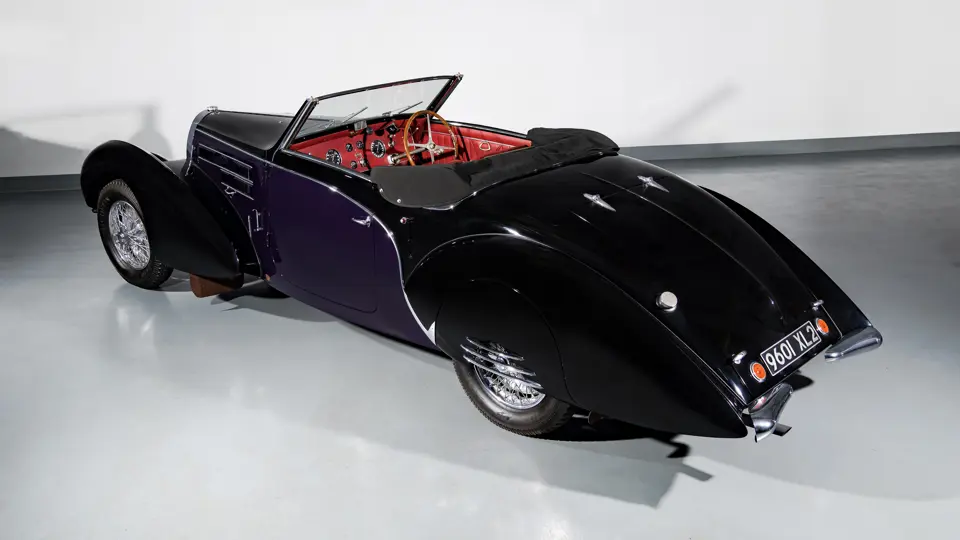



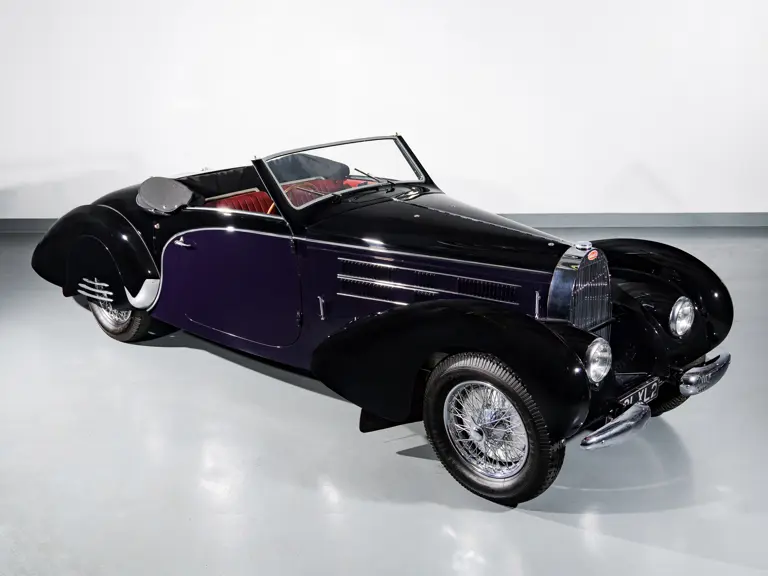
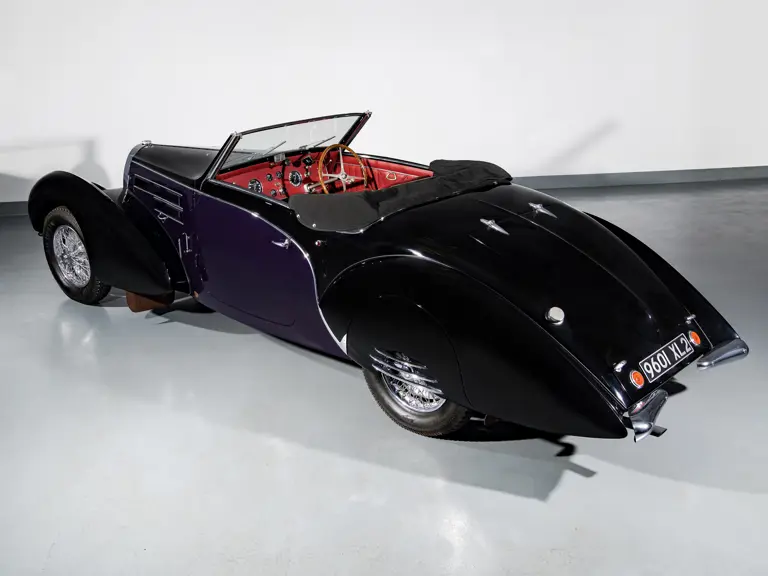
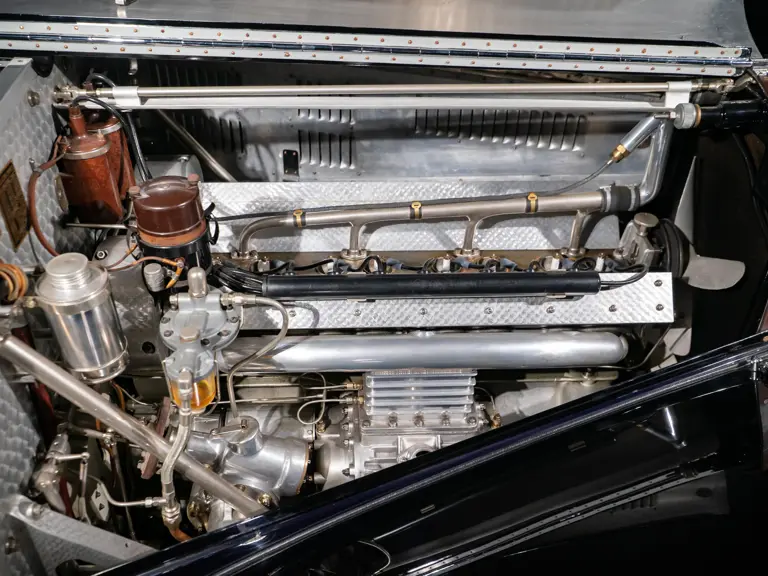
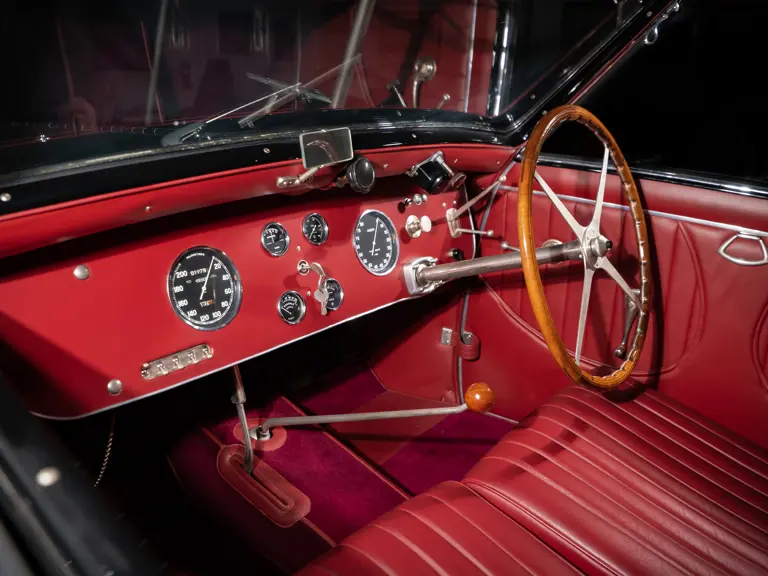
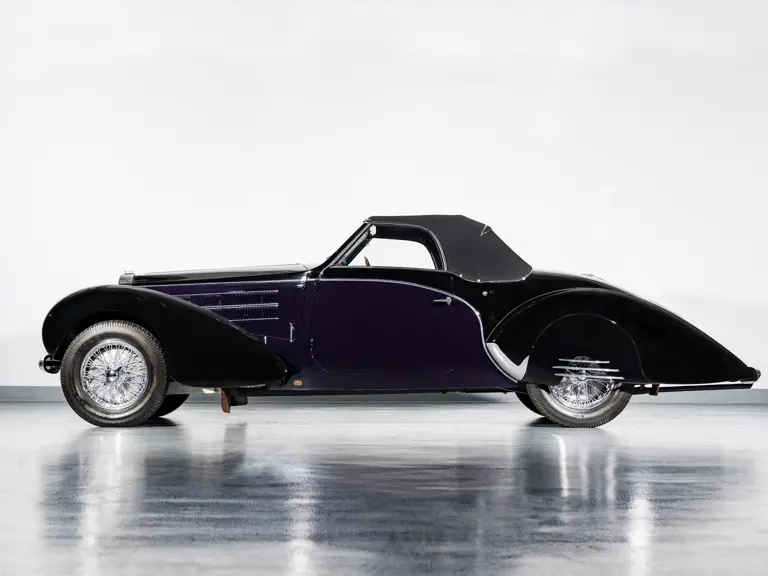
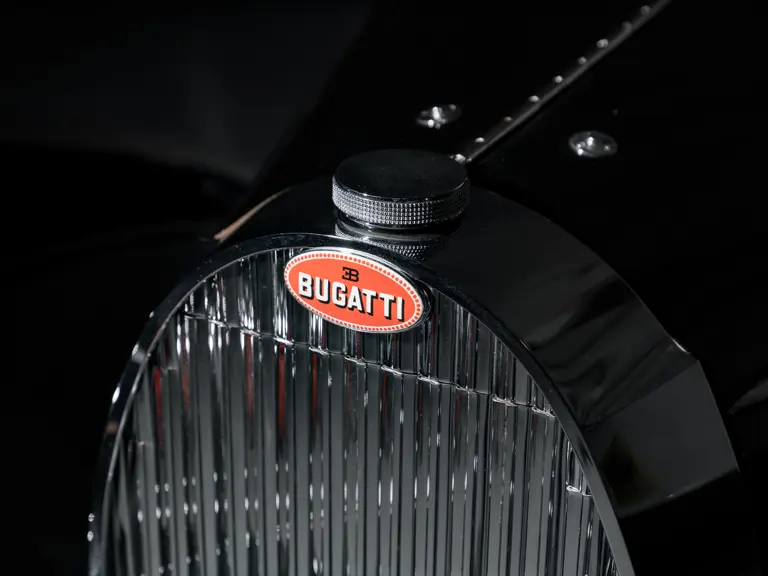
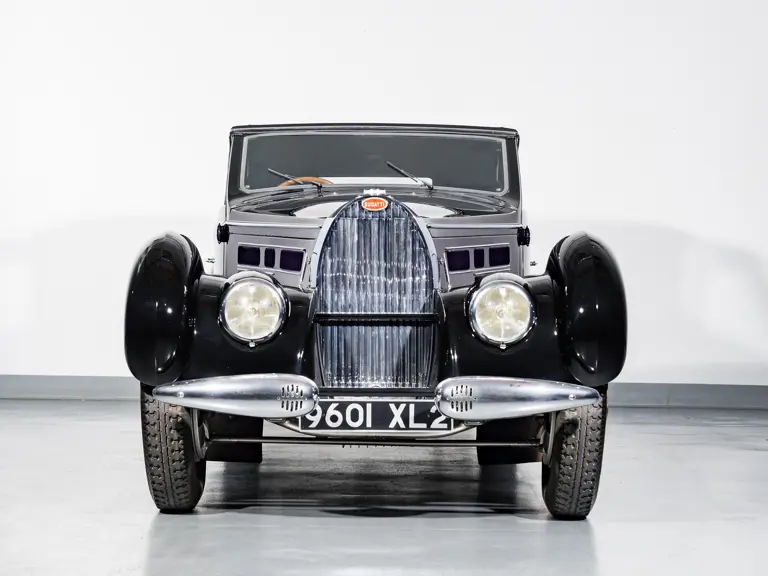
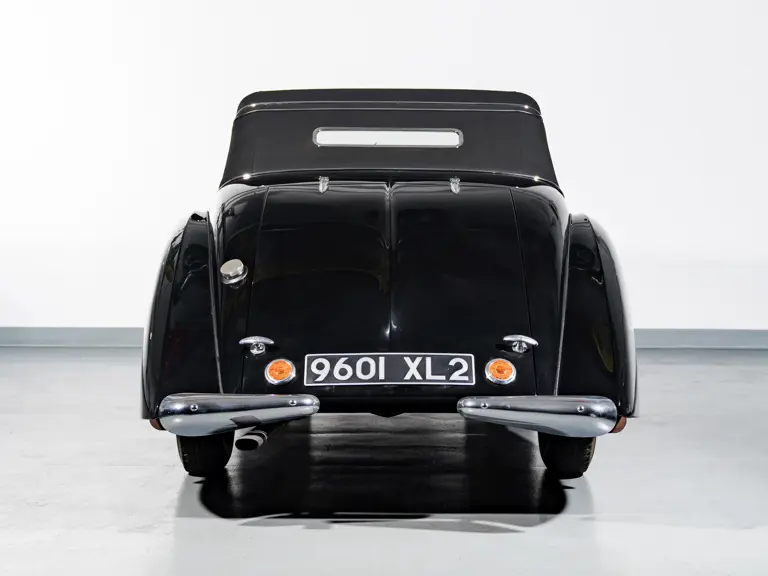
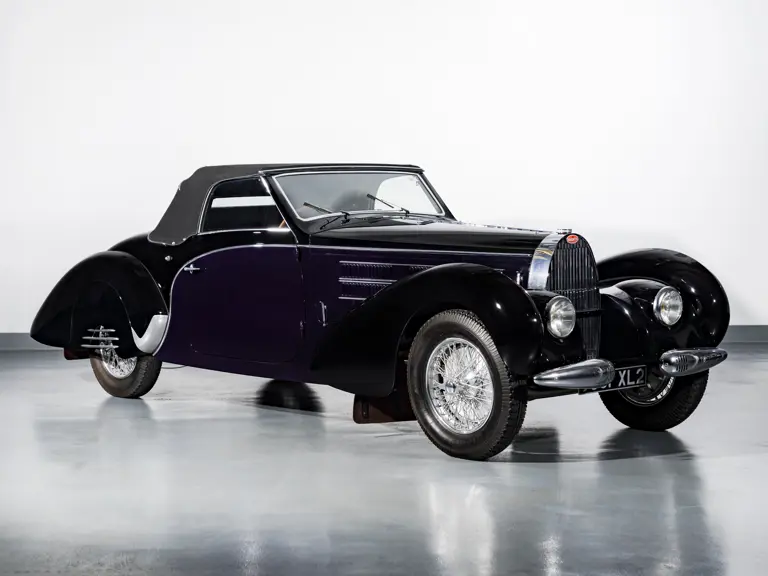
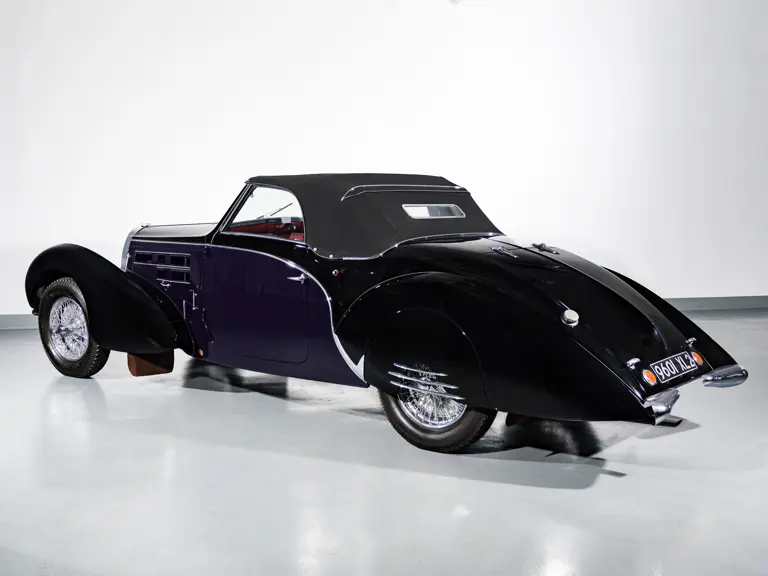
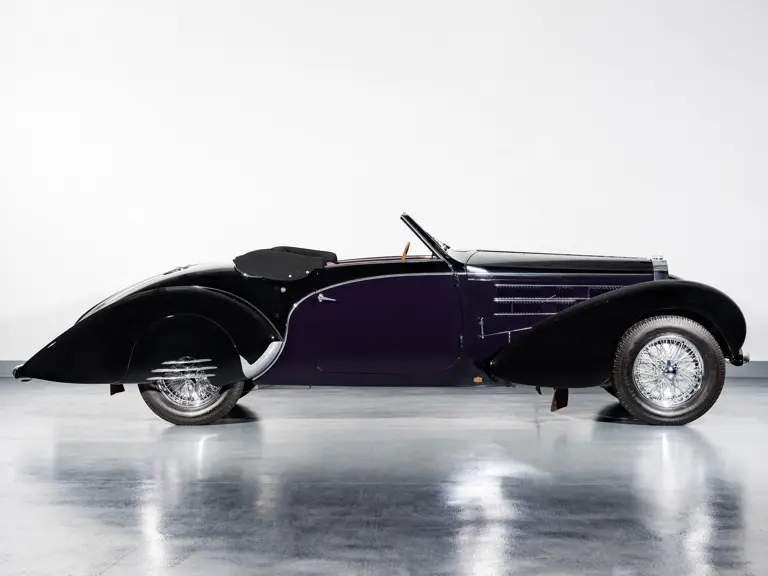
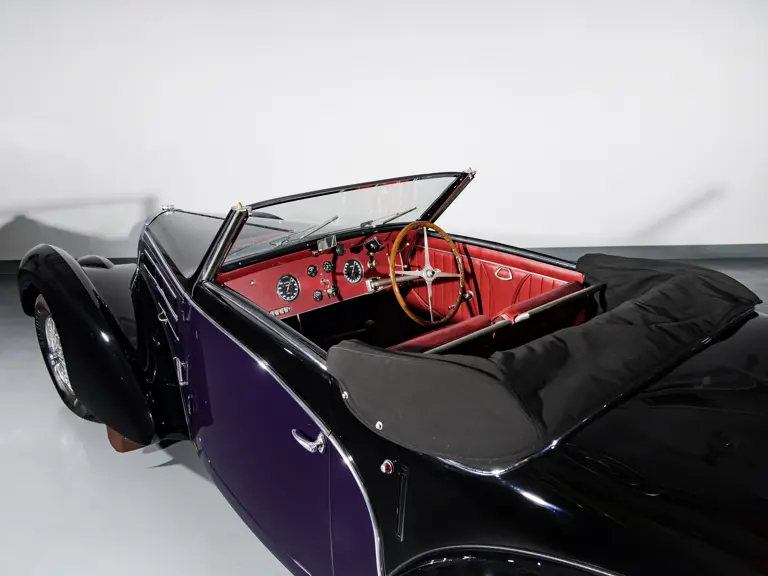
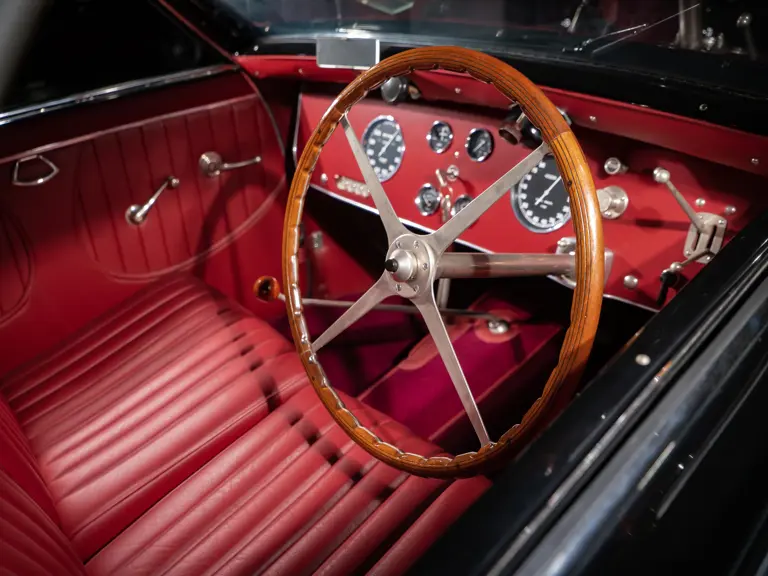
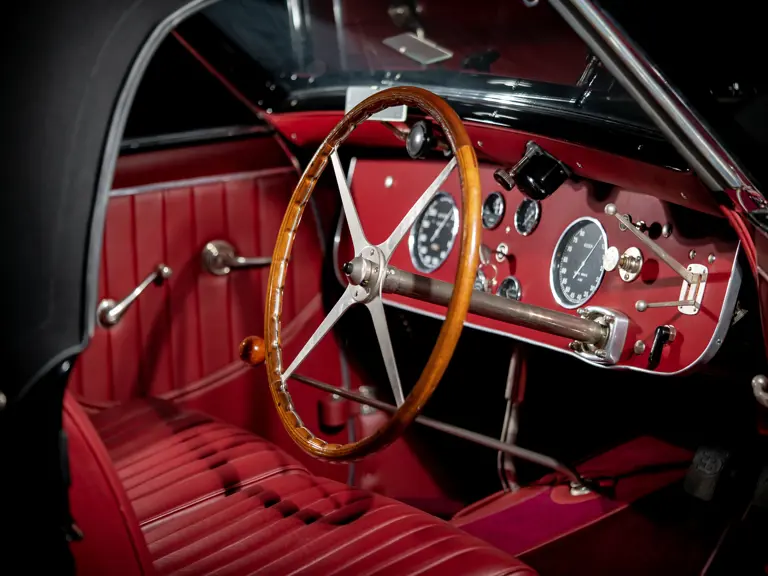
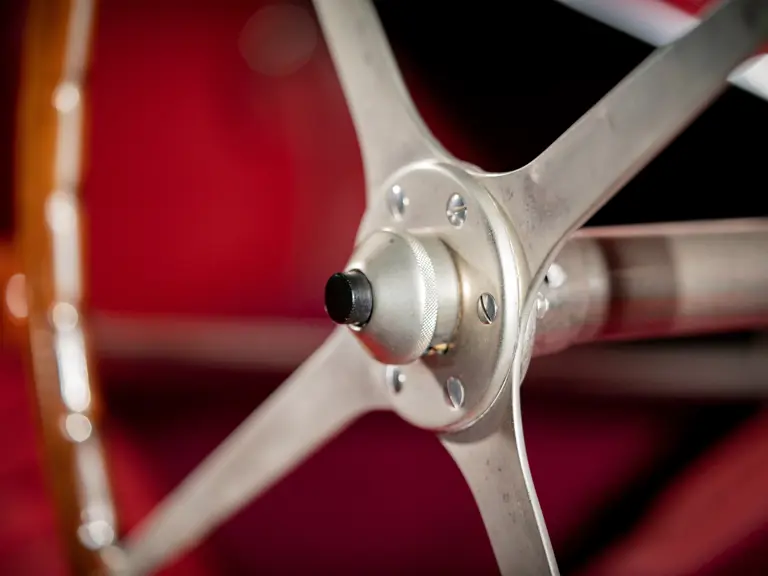
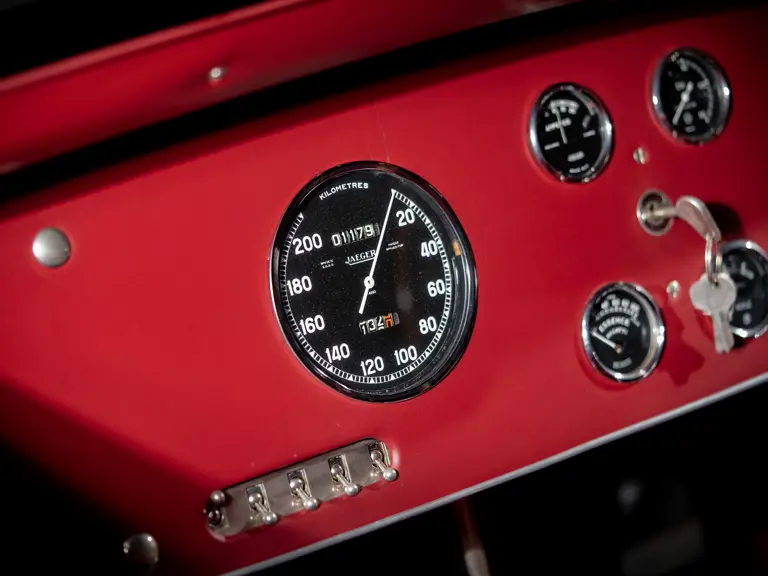
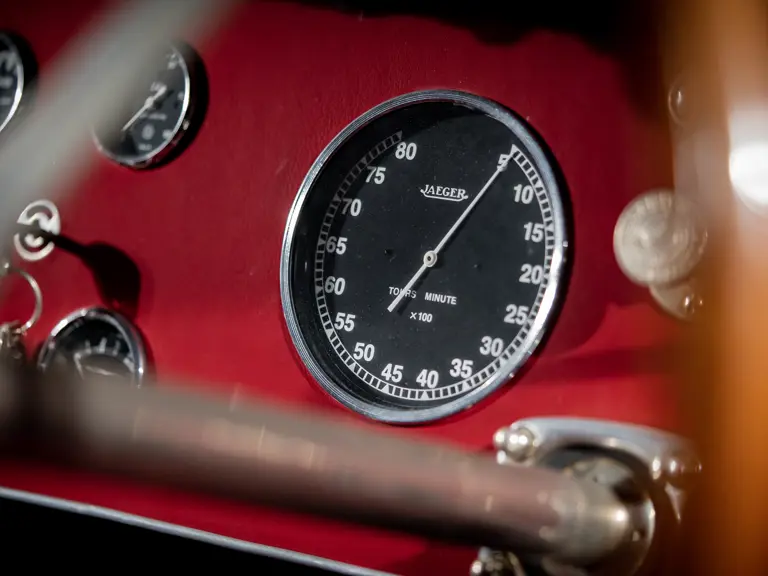
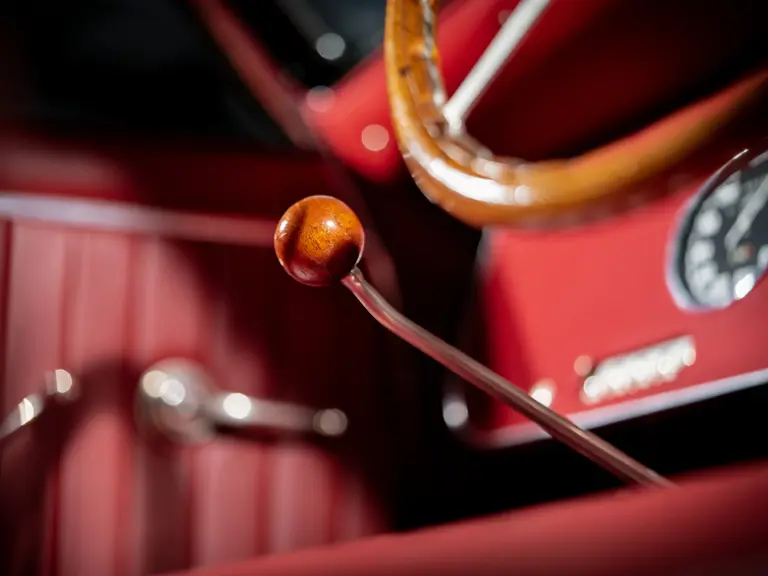
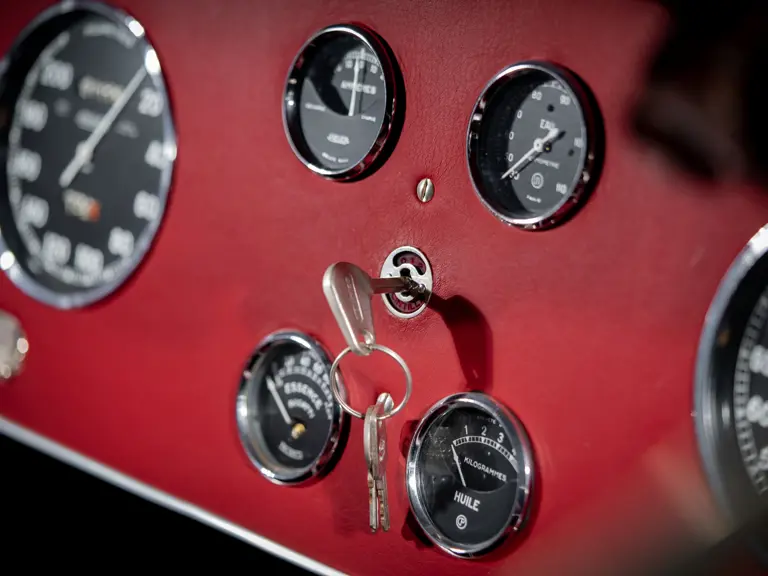
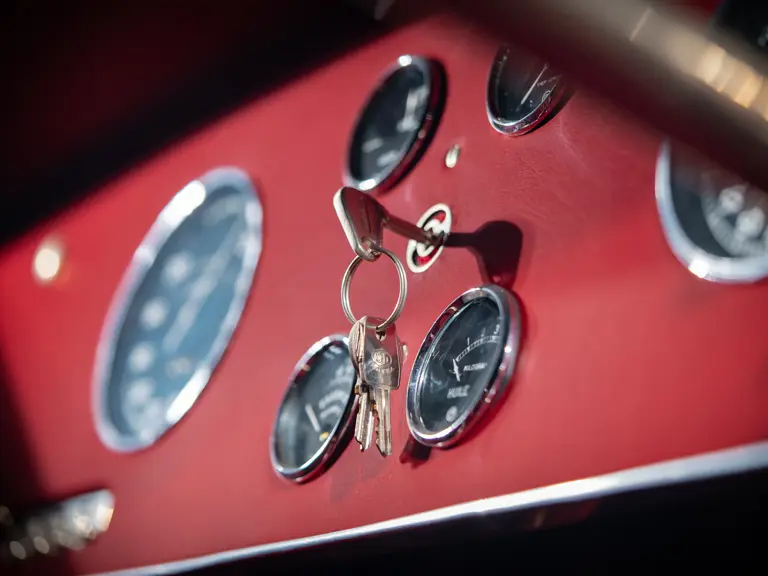
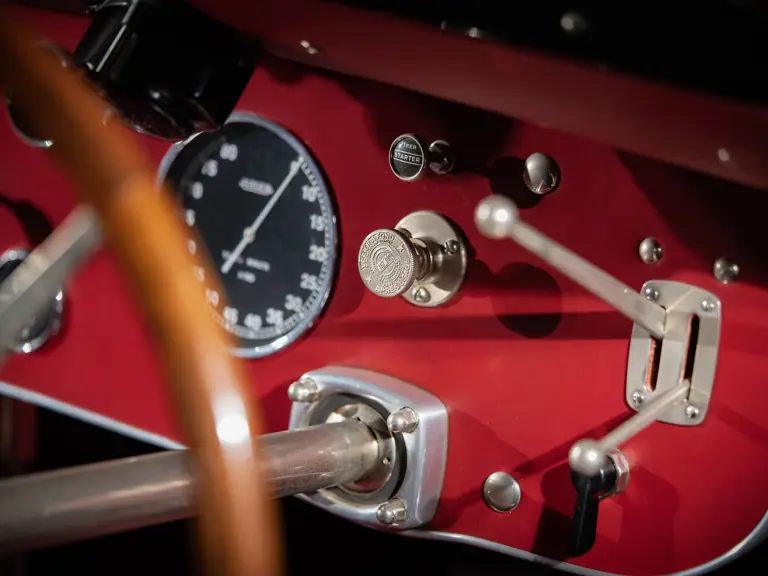
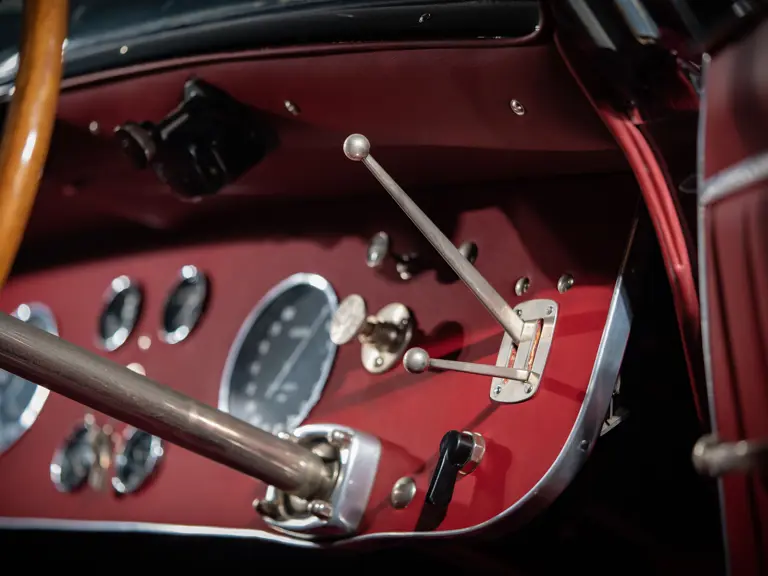
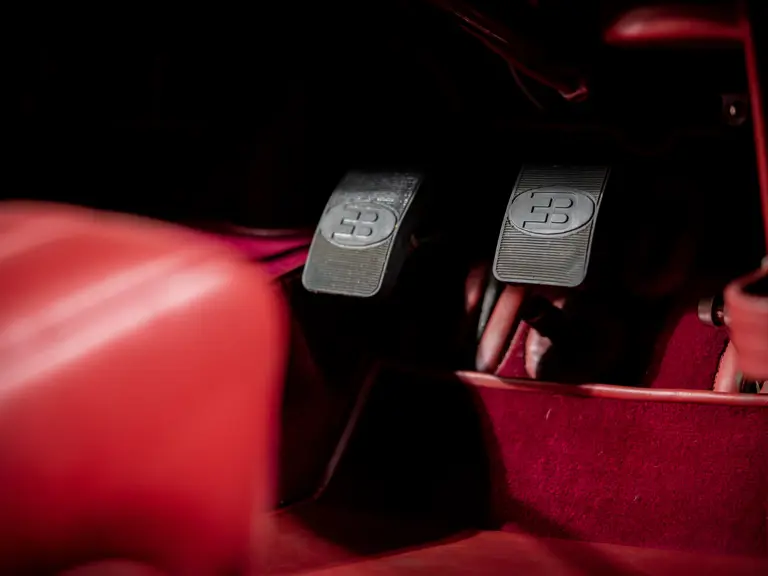
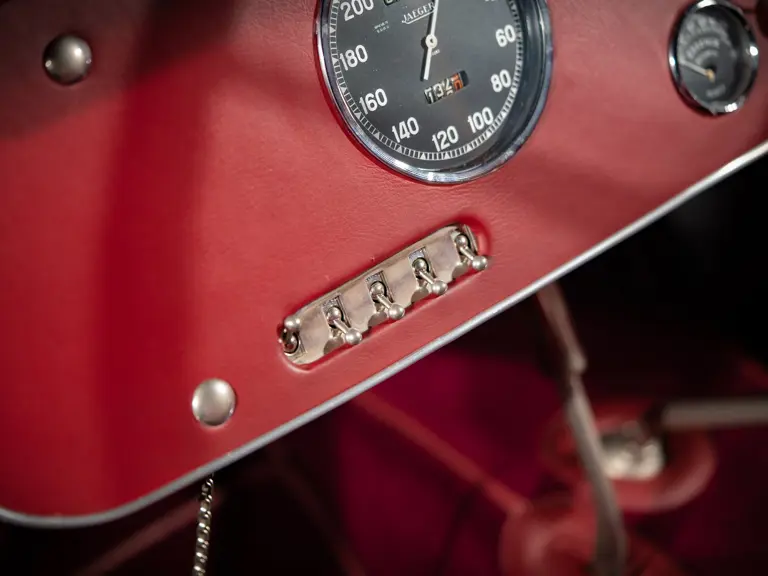
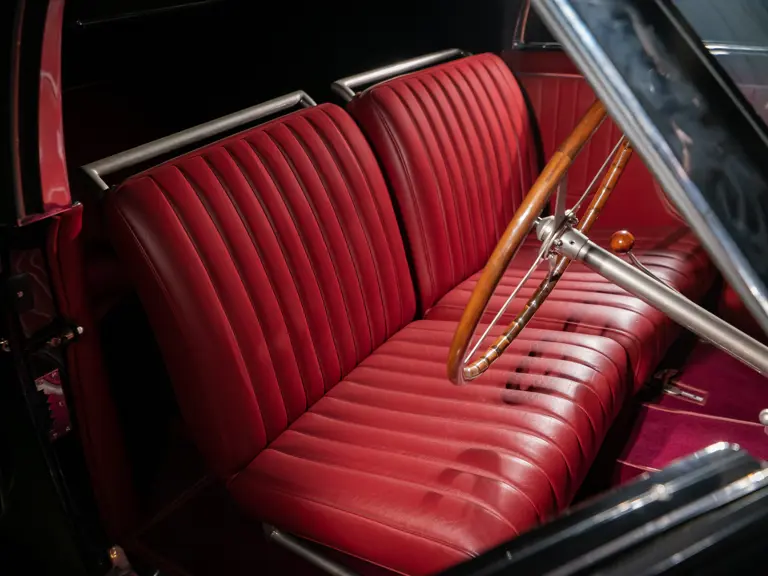
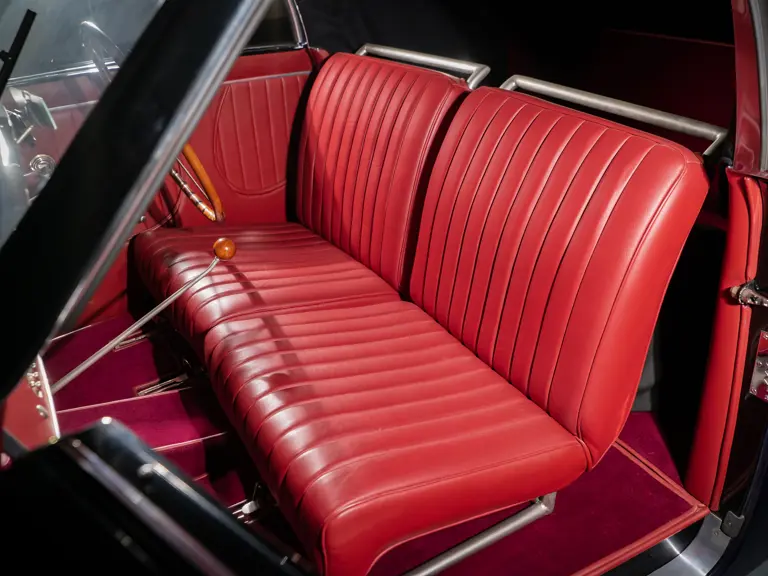
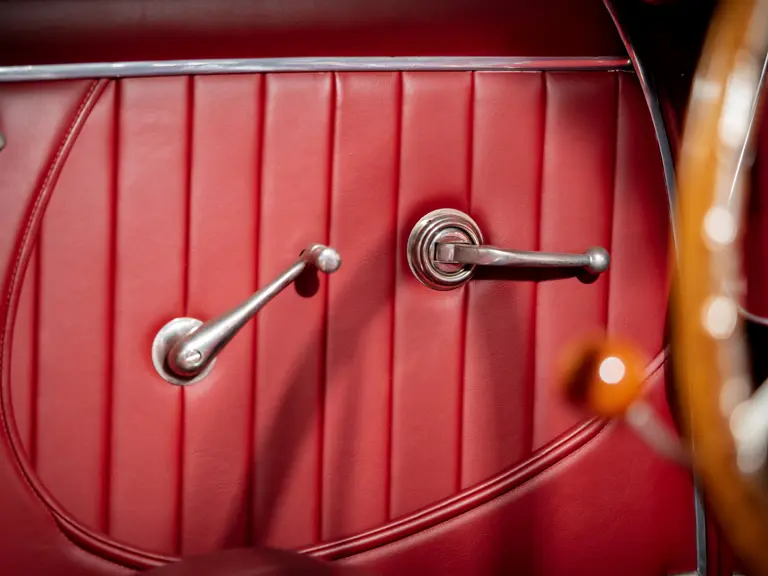
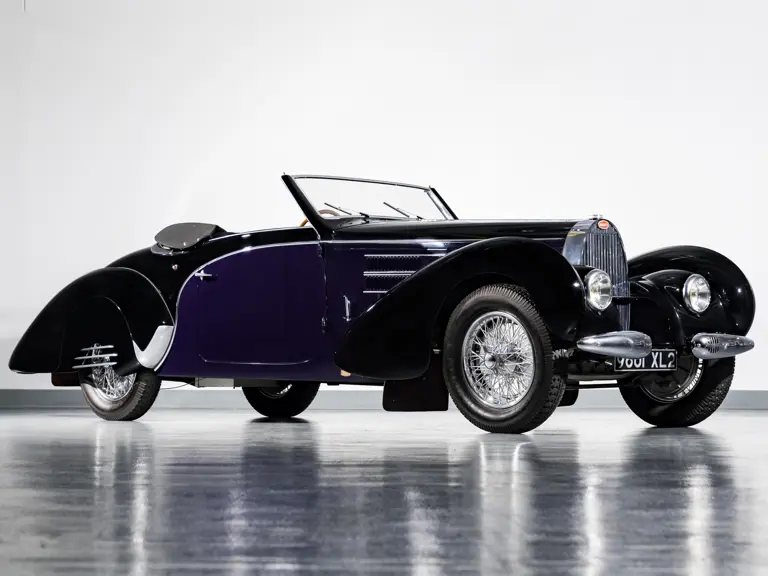
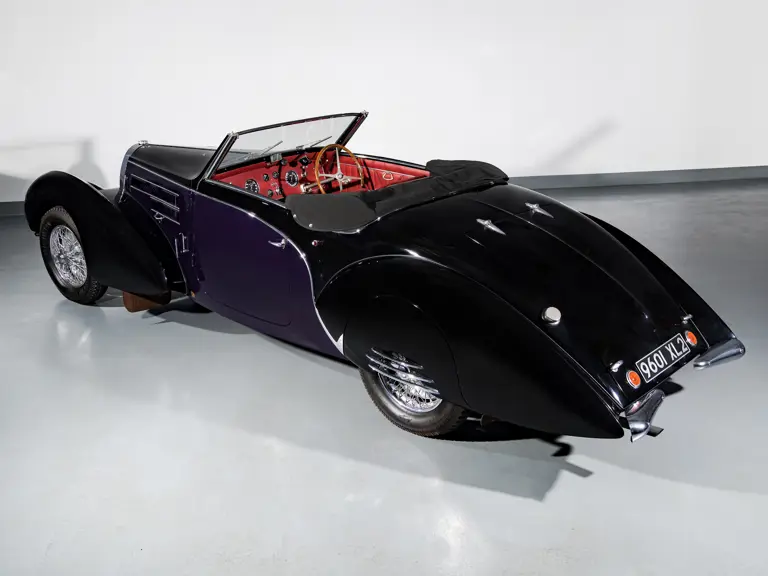
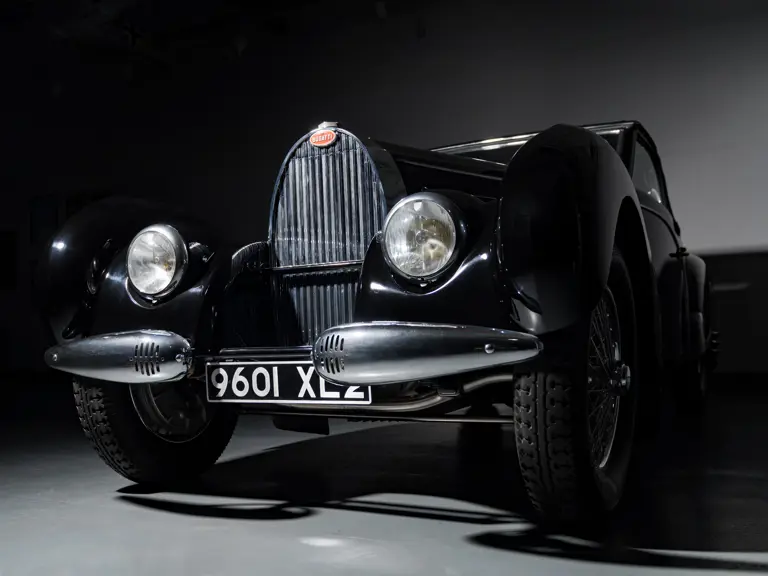
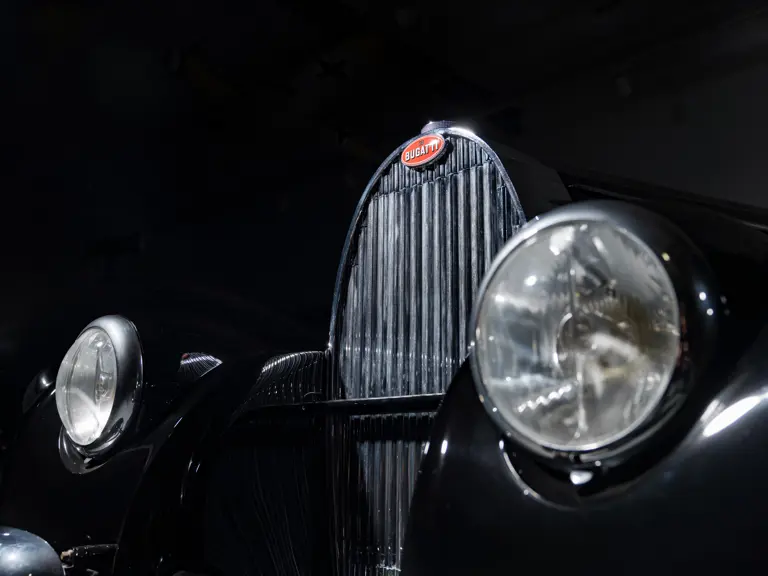
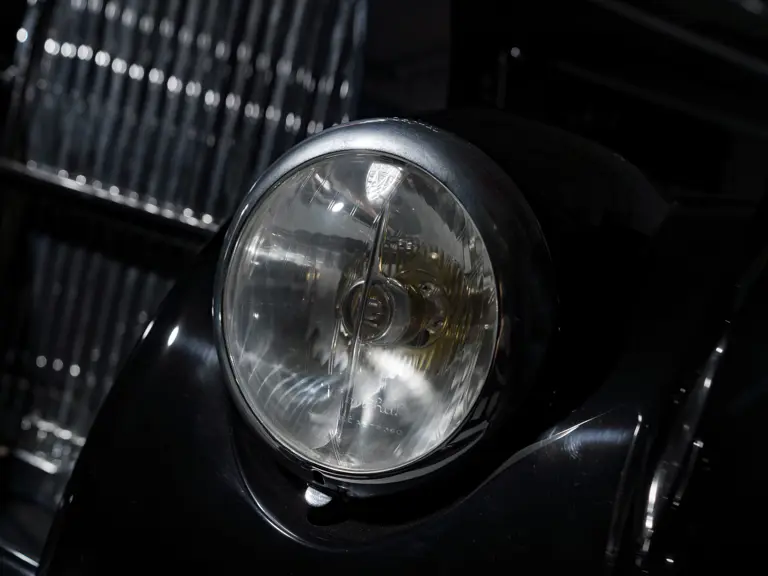

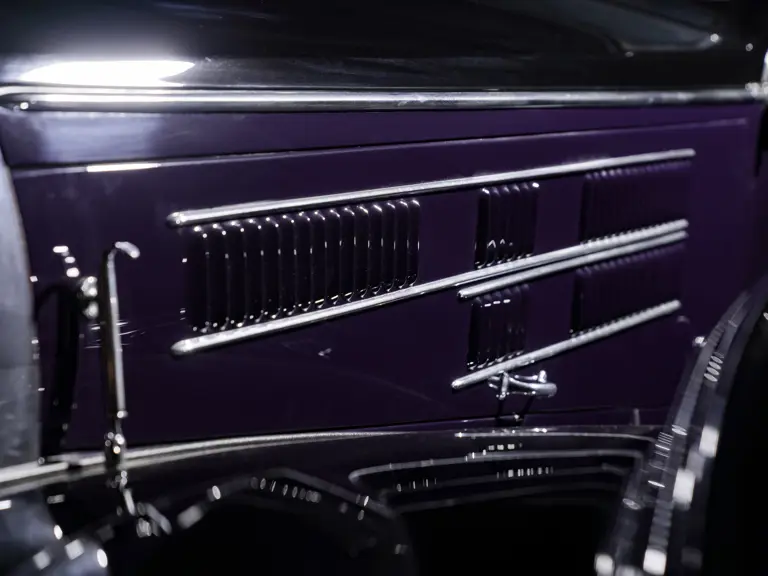
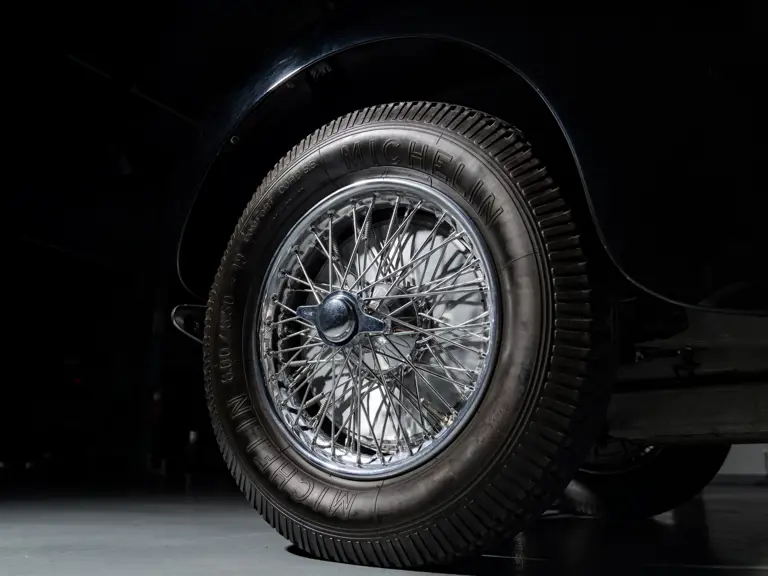
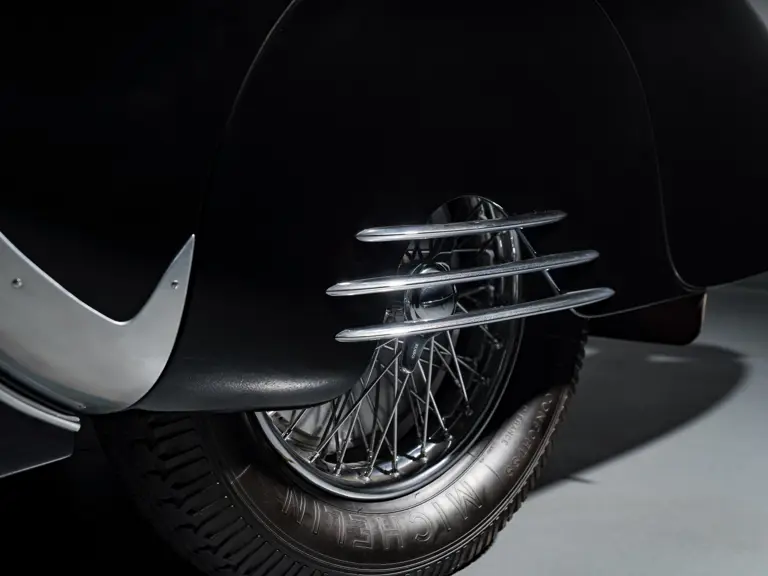
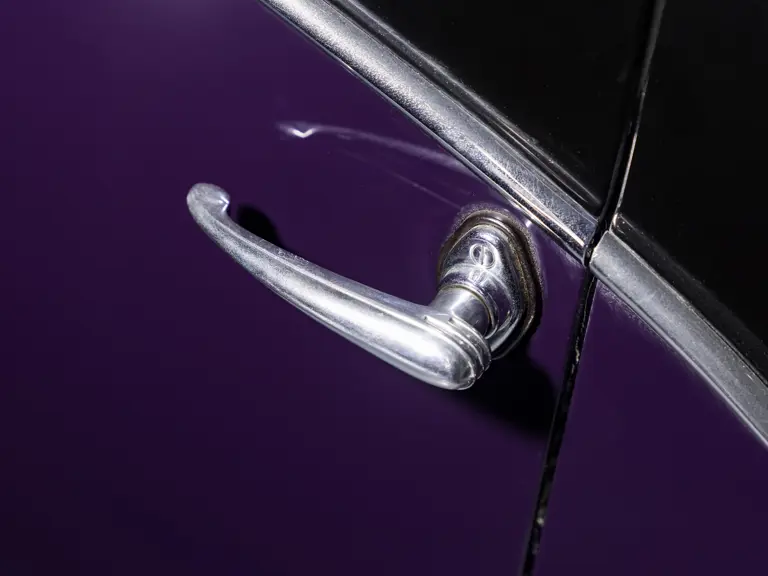

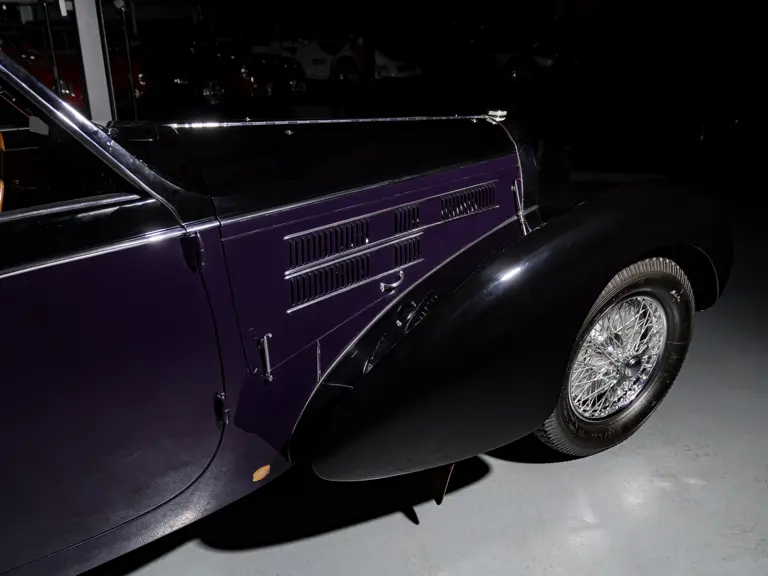
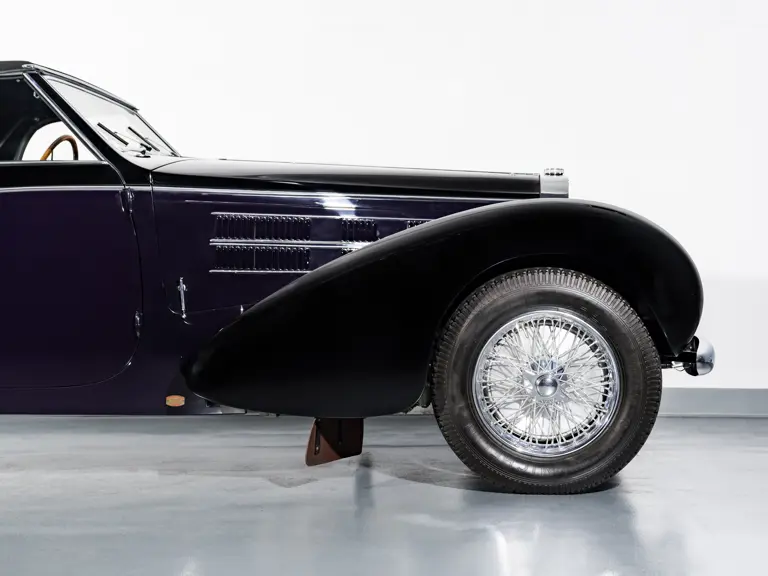

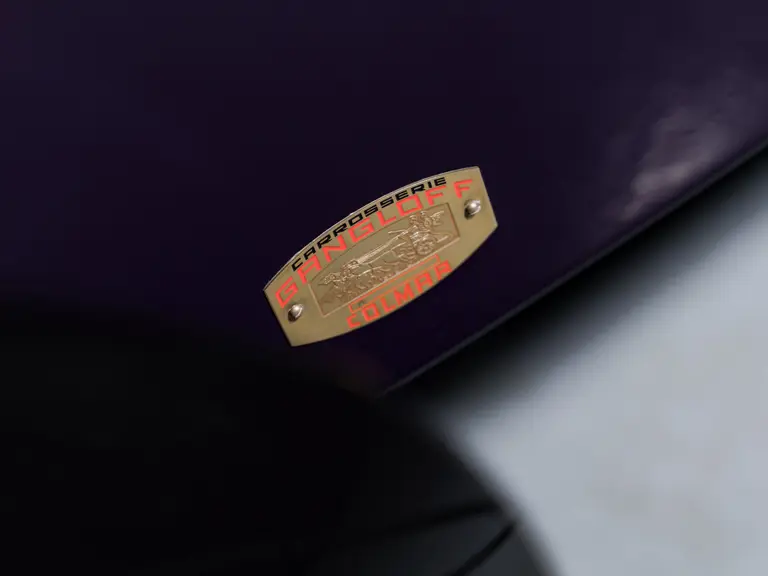

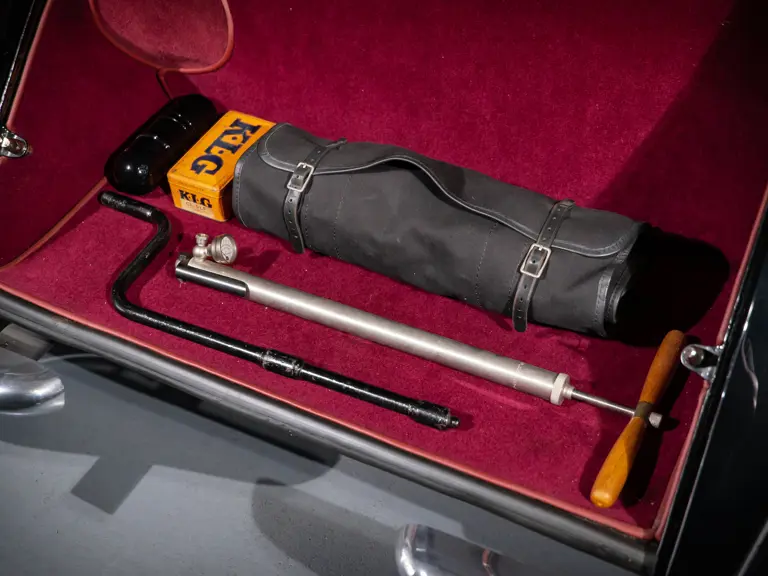
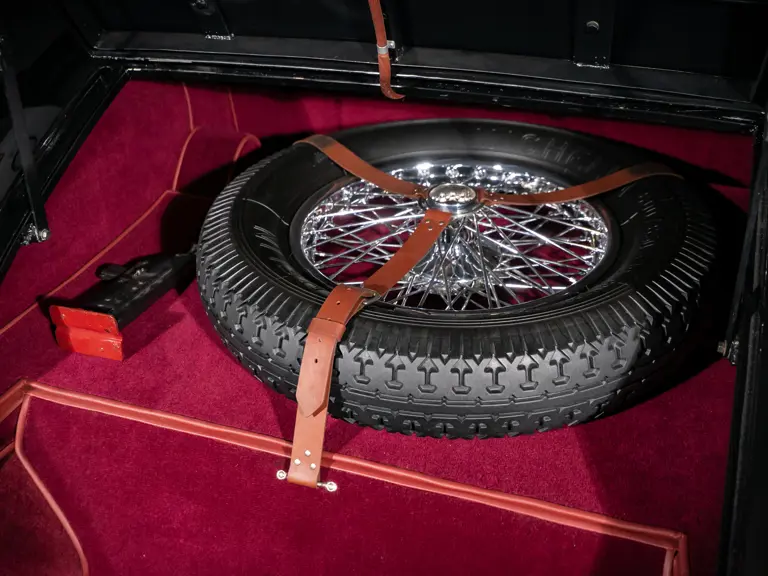
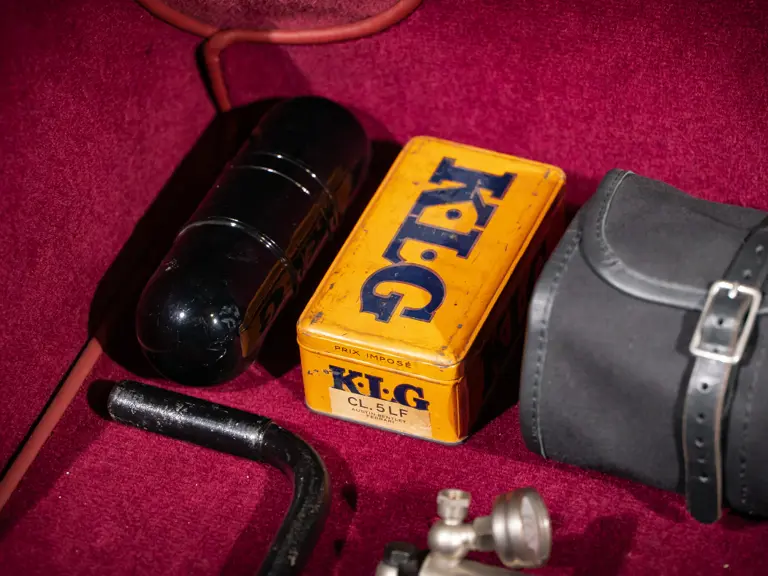

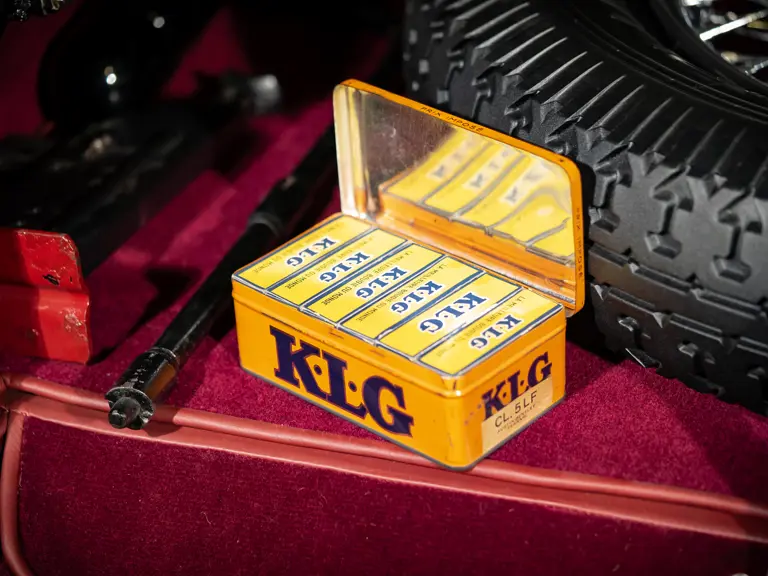
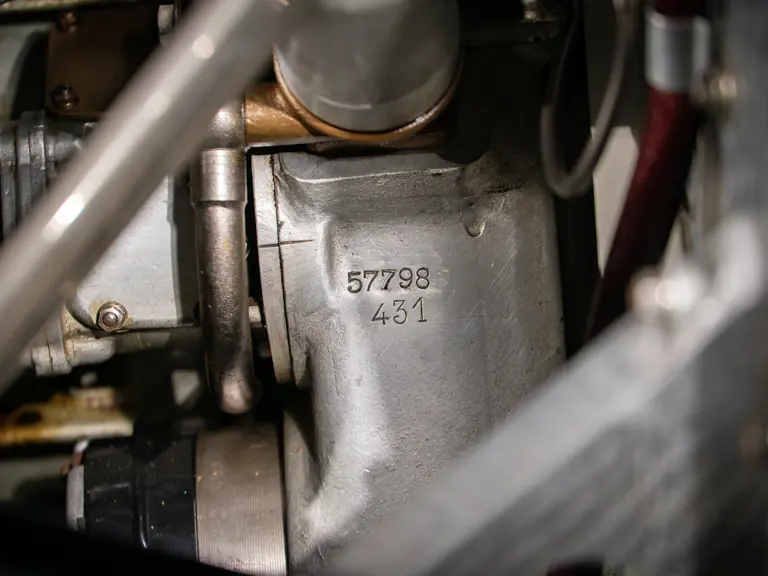
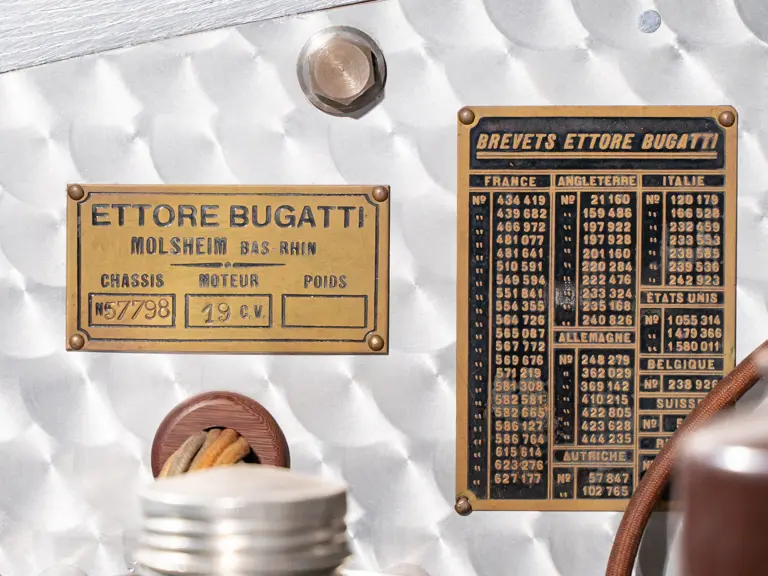
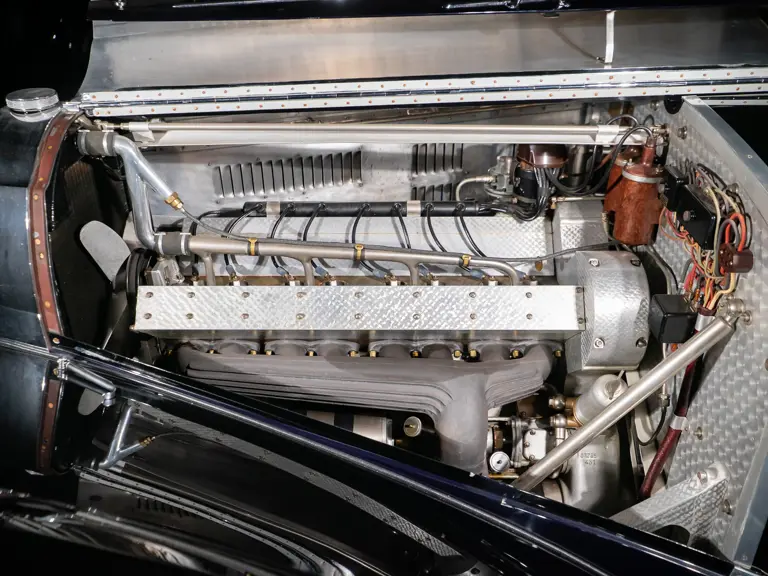
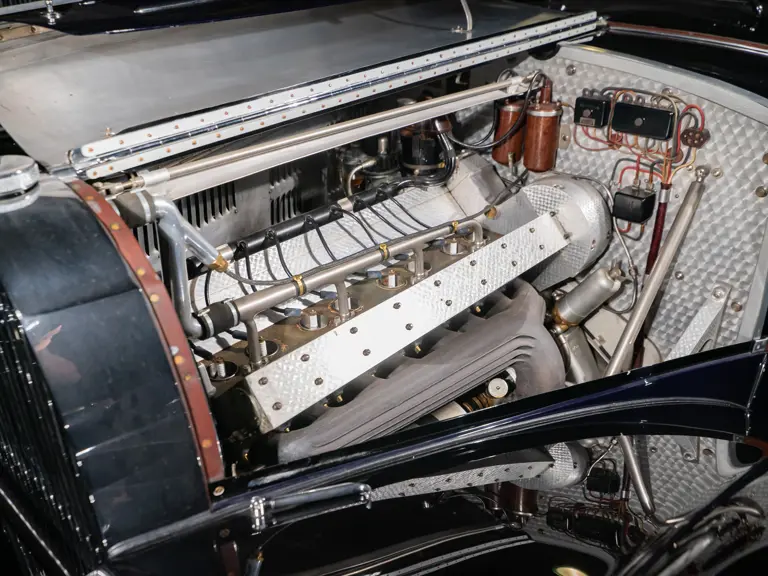
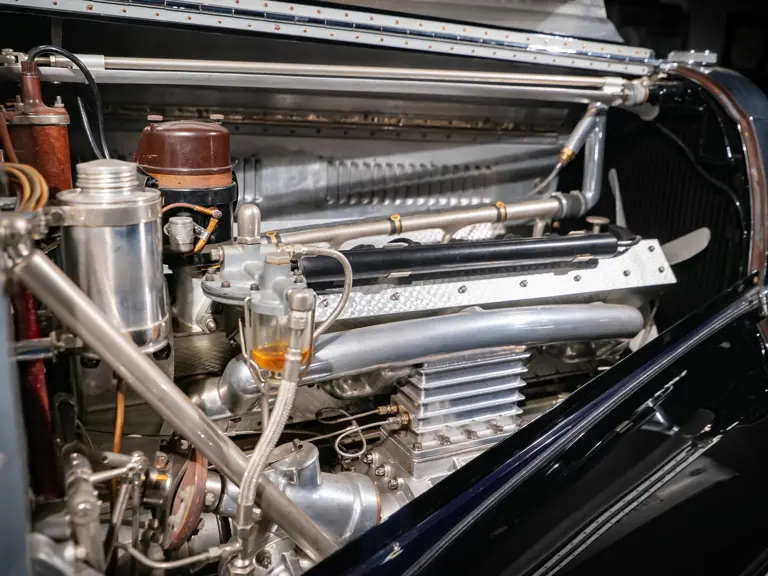
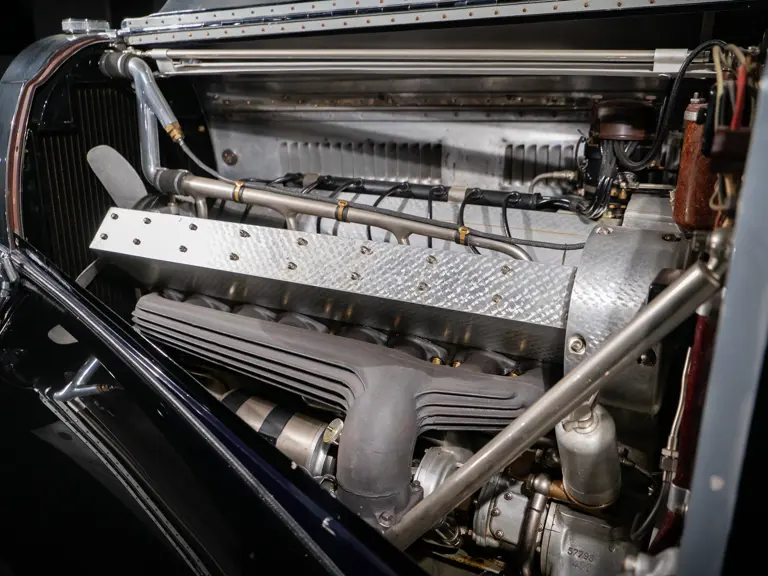
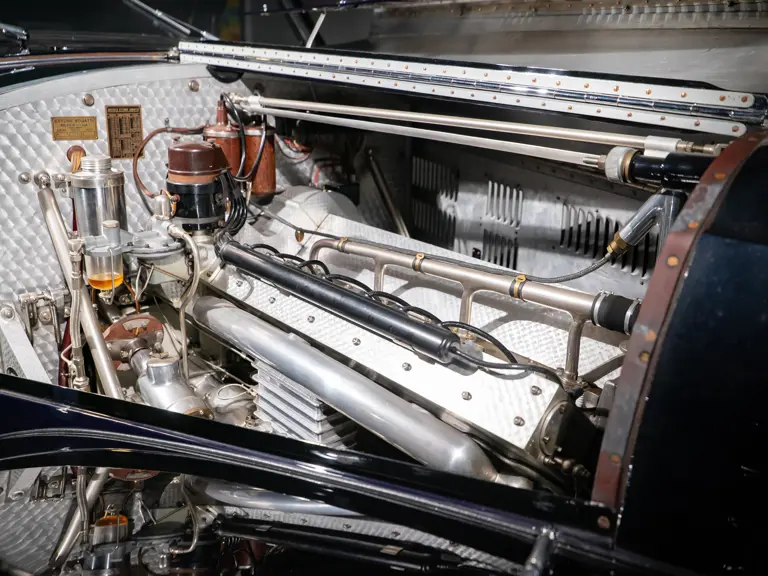
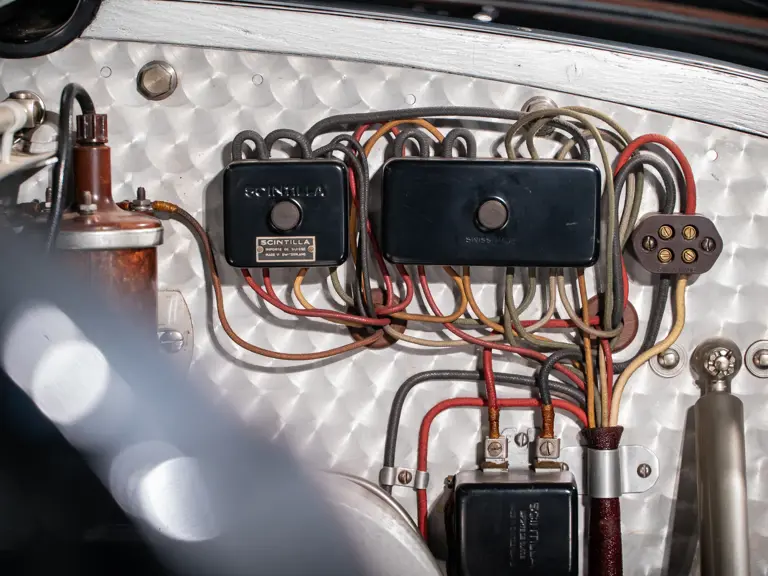
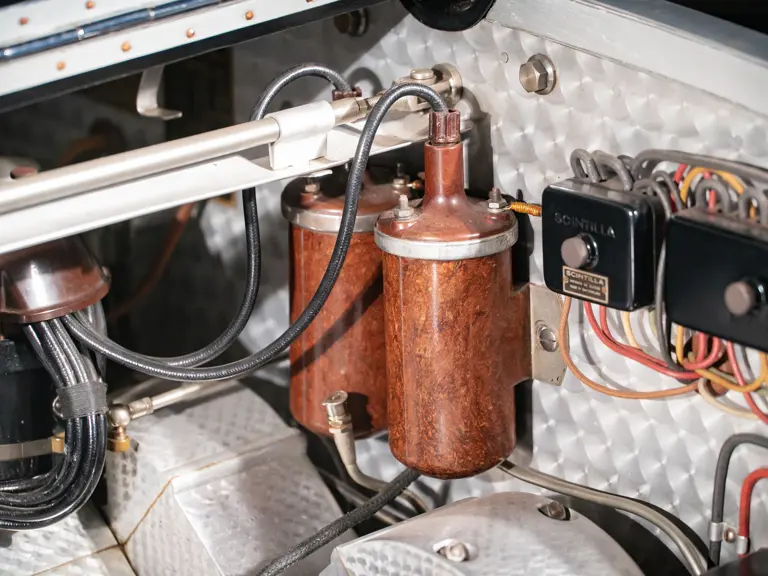
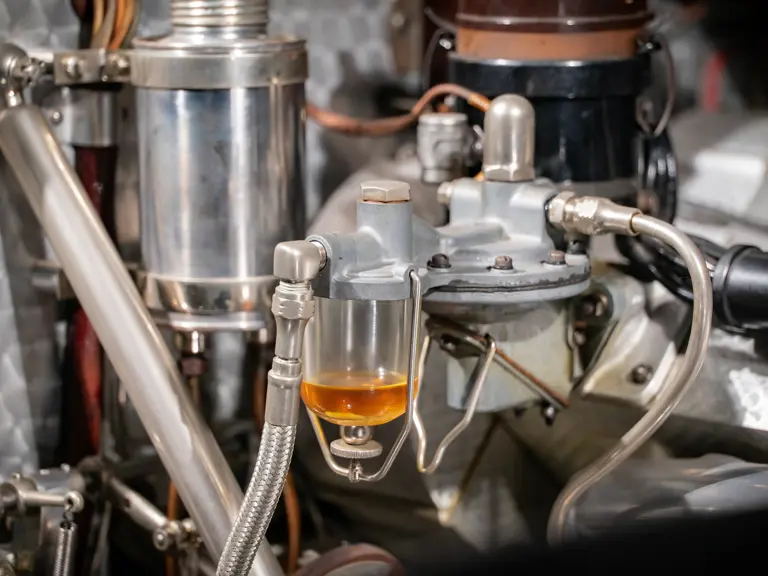
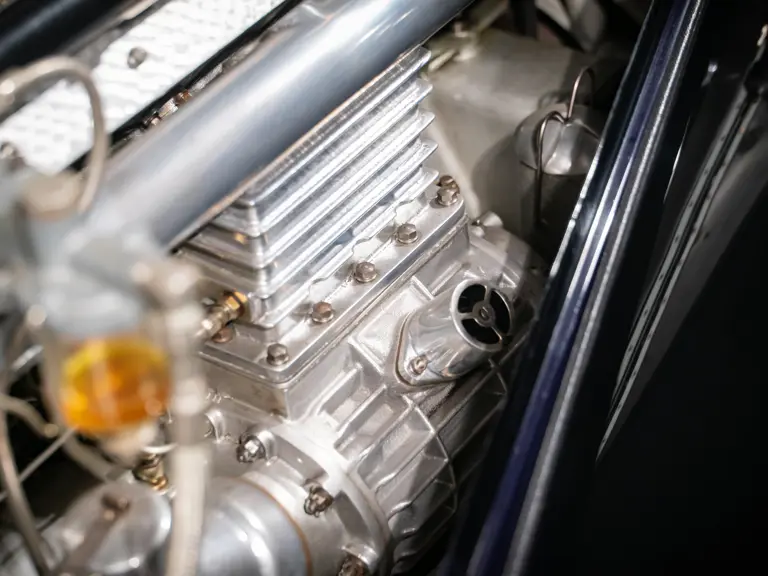
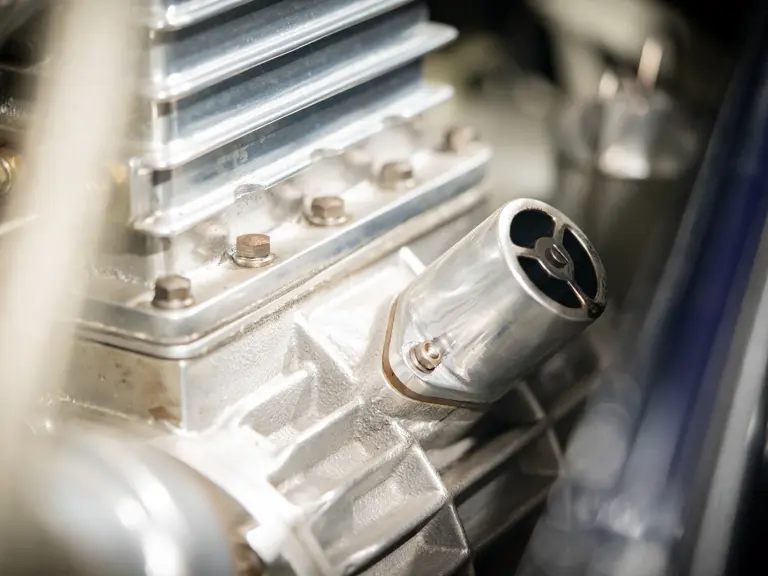
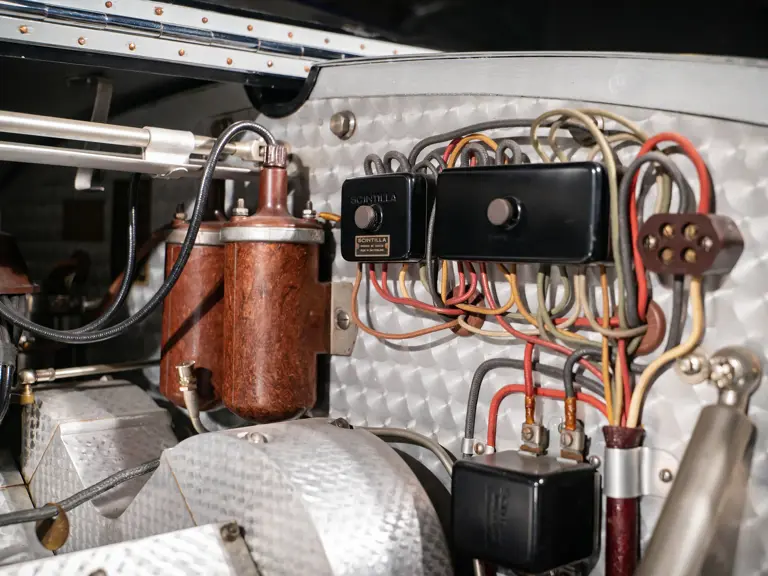
 | Monterey, California
| Monterey, California
